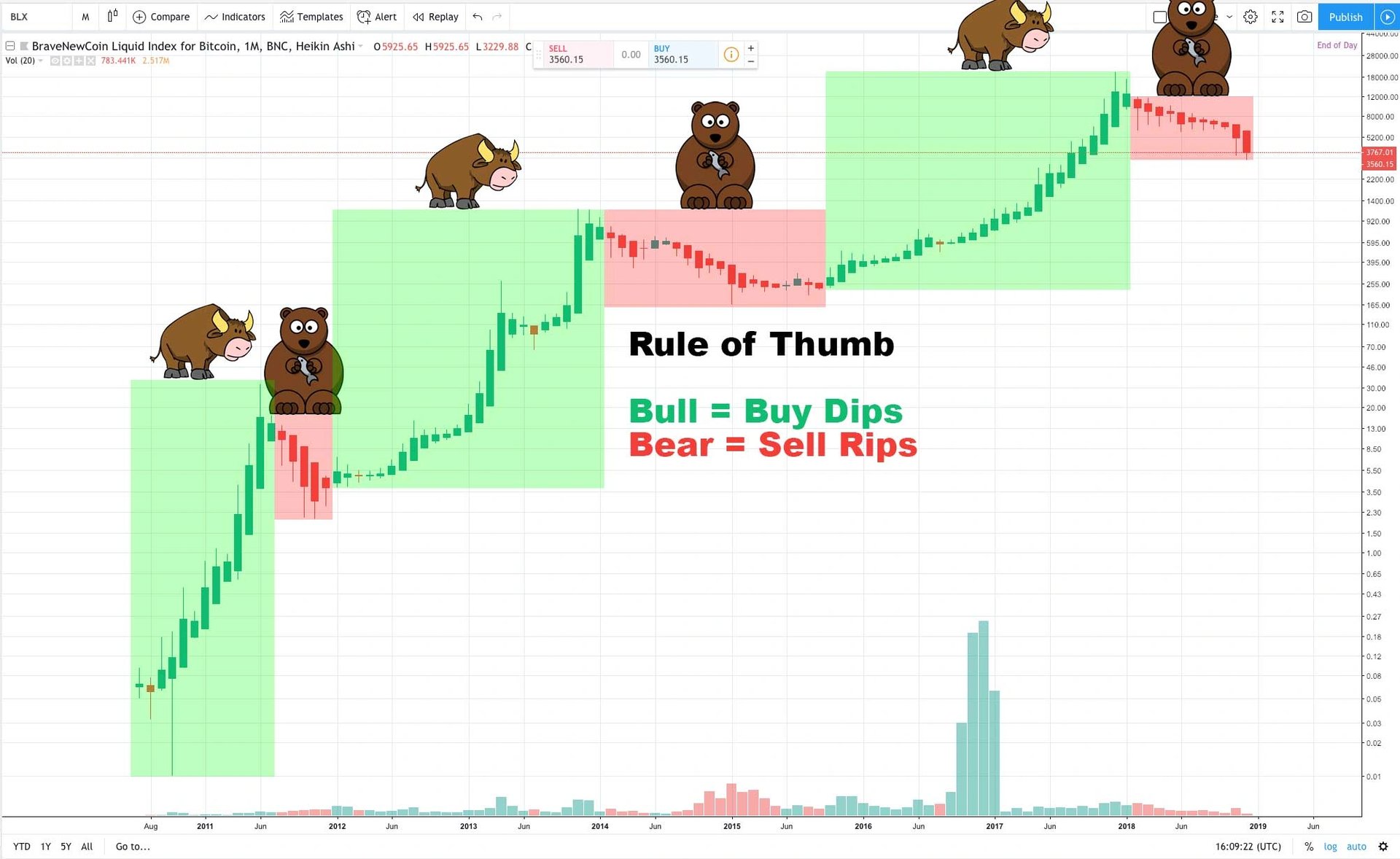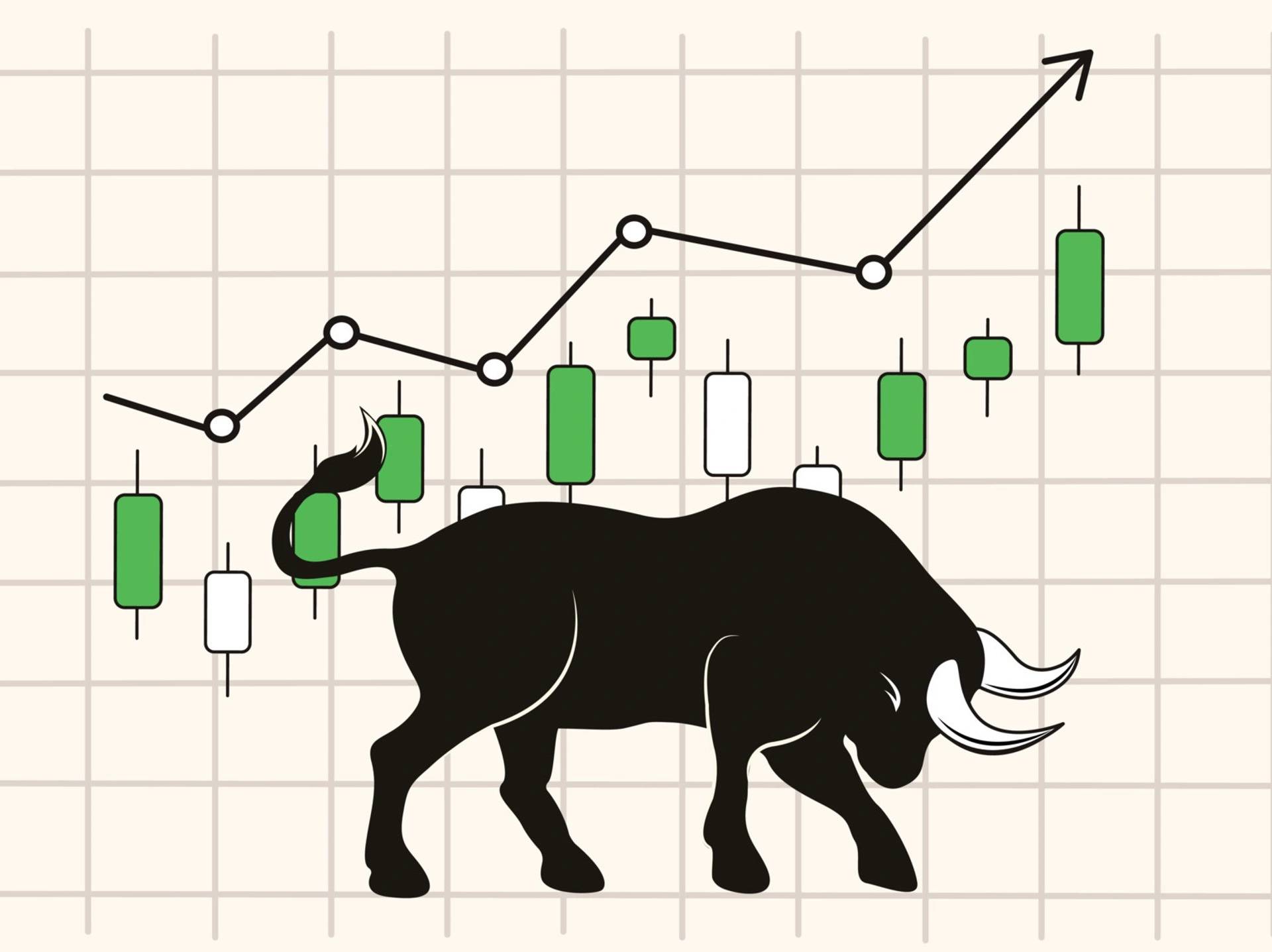Subscribe to wiki
Share wiki
Bookmark
Bull Market
The Agent Tokenization Platform (ATP):Build autonomous agents with the Agent Development Kit (ADK)
Bull Market
Bull Market (or bull run) is a continuous and sustained rise in asset prices, which is typically supported by a robust economy and increased levels of employment. During a bull market, there are positive economic conditions, denoting a market's upward trajectory and are often accompanied by favorable investor sentiments regarding the ongoing uptrend.[1][2] In the crypto space, a bull market is a period of time when the prices of cryptocurrencies are rising or expected to rise. This usually happens when there is more demand than supply, and when investors are optimistic about the future of the crypto industry.[8]
Overview
The term "bull market" describes a positive price trend within a market. This concept is widely applicable, not only in traditional markets but also in the cryptocurrency realm. In essence, a bull market indicates a robust upward trend characterized by significant price increases over a relatively concise timeframe.
There isn't a universally standardized metric to pinpoint a bull market. In the stock market, the most widely accepted definition of a bull market is when stock prices experience a rise of 20% or more from their recent lows. This is in contrast to bear markets where prices experience a decline of 20% or more for a sustained period. [1][4]
In contrast to traditional markets, cryptocurrency markets are relatively smaller and consequently exhibit higher volatility. As a result, it is not uncommon to witness significant and sustained bull runs, where rapid price surges of 40% or more within just 1 or 2 days are quite frequent.[3][9]

Indicators
Identifying a bull market can often be as simple as observing the price trend, which typically displays a consistent upward movement across various cryptocurrencies. To determine a bull market, the following factors and indicators are considered for a more comprehensive financial analysis:
- Increased Prices: Bull runs are typically characterized by an extended phase of price rises resulting from increased confidence and greater demand. For instance, in the 2020 and 2021 bull run, major cryptocurrencies like Bitcoin and Ethereum reached record highs of $69,000 and $4,880, respectively. [6]
- Positive market Sentiment: During a bull market, there's typically a positive investor sentiment characterized by optimism and confidence in the upward trajectory. This means that investors are confident and enthusiastic about the potential of cryptocurrencies, and they are willing to take more risks and invest more money. This sentiment can be gauged through surveys, market sentiment indicators, and media coverage.[1][4][5]
- Increased Trading Volume: Bull markets usually witness an uptick in trading volume. This means that more people are buying and selling cryptocurrencies, which creates more liquidity and price discovery. This increased trading volume signifies growing investor confidence and active engagement in the market.[2][5]
- Higher market capitalization: The total value of all cryptocurrencies in circulation is increasing, which reflects the growing interest and adoption of crypto.[8]
Examples
2013 Bull Market
Bitcoin's price soared from approximately $13 in January to over $1,000 in December, showcasing a remarkable increase that captured significant attention and laid the groundwork for future developments in the crypto market. [5]
2017 Bull Run
One of the most iconic bull markets in the cryptocurrency space took place in 2017. Cryptocurrency prices experienced an unprecedented surge during this period. Bitcoin reached an all-time high of nearly $20,000 in December 2017. Other cryptocurrencies such as Ethereum, Ripple, and Litecoin also underwent substantial price spikes. The 2017 bull run was driven by factors such as the launch of bitcoin futures, the increasing mainstream awareness and adoption of crypto, and the emergence of new projects and innovations in the crypto space.[5]
2019 Bull Market
Following the bear market of 2018, cryptocurrencies saw a recovery in 2019. Bitcoin's price, which had started the year around $3,700, surged to nearly $14,000 by the end of June. This rally revitalized investor interest and optimism in the crypto market. [5]
2020-2021 Bull Market
Bitcoin's price escalated from roughly $4,000 in March 2020 to an all-time high exceeding $64,000 in April 2021. Ethereum and various altcoins also enjoyed significant price gains during this timeframe. The 2020-2021 bull run was fueled by factors such as the COVID-19 pandemic, which increased the demand for digital and decentralized alternatives to traditional finance, the institutional and corporate adoption of crypto, such as Tesla buying $1.5 billion worth of bitcoin, and the development and growth of new sectors and trends in the crypto industry, such as decentralized finance (DeFi) and non-fungible tokens (NFTs).[5][8]
2021 Altcoin Bull Run
Parallel to Bitcoin's rally in 2021, there was a substantial bull market for numerous altcoins. Cryptocurrencies like Ethereum, Binance Coin, Cardano, and others experienced considerable price appreciation. Factors like decentralized finance (DeFi) and non-fungible tokens (NFTs) played a role in driving this surge. [5]
These various bull markets demonstrated the dynamic and evolving nature of the cryptocurrency market, showcasing periods of significant price growth and capturing the attention of investors and enthusiasts alike.[5]
See something wrong?
The Agent Tokenization Platform (ATP):Build autonomous agents with the Agent Development Kit (ADK)
